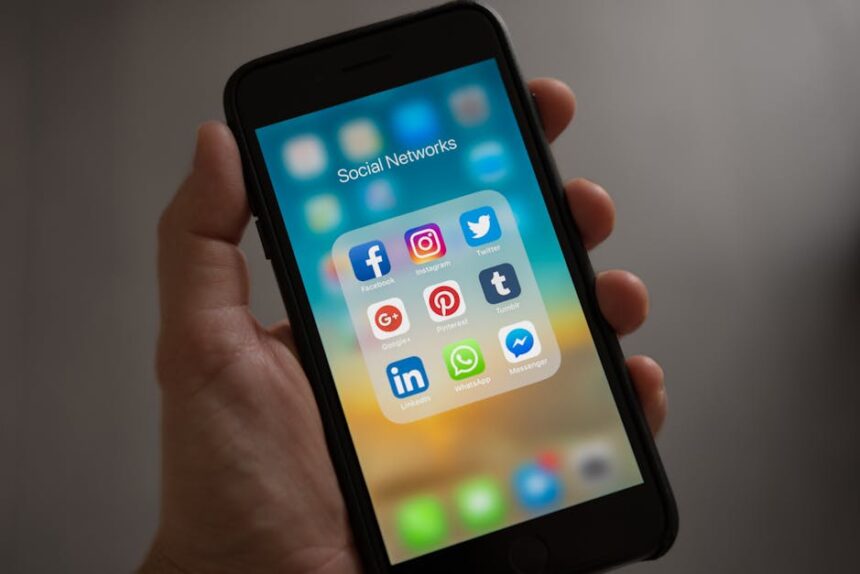Landing Page Optimization for Instagram Traffic is a nuanced discipline, demanding a deep understanding of the Instagram user journey, mobile-first design principles, and conversion psychology. Unlike traffic from search engines or desktop social platforms, Instagram users arrive with a specific mindset: highly visual, often on-the-go, accustomed to instant gratification, and frequently engaging with content on impulse. Optimizing landing pages for this audience requires a strategic fusion of aesthetic appeal, functional efficiency, and persuasive communication designed to bridge the gap between a fleeting scroll and a meaningful conversion.
Understanding the Unique Nature of Instagram Traffic
Instagram, primarily a mobile-first, visually driven platform, cultivates a distinct user behavior. Users are accustomed to consuming content rapidly, often while multitasking, and their attention spans are notoriously short. When they click a link from an Instagram bio, a Story swipe-up, a shoppable post, or an ad, they expect an immediate continuation of their visual journey and an intuitive path to their desired outcome.
- Visual-First Mentality: Instagram users process information visually before engaging with text. Their decision to click is often based on an appealing image or video. The landing page must immediately validate this visual expectation with high-quality, relevant media.
- Mobile Dominance: The vast majority of Instagram engagement occurs on mobile devices. This isn’t just about responsive design; it’s about designing for mobile as the primary interaction point, ensuring every element is thumb-friendly, legible on smaller screens, and loads quickly on various network conditions.
- Impulse-Driven Decisions: Many clicks from Instagram are spontaneous. The landing page must capitalize on this impulse by making the value proposition clear and the conversion path frictionless. If there’s any confusion or delay, the user is likely to bounce.
- Source of Traffic Diversity: Instagram offers multiple avenues to drive traffic:
- Bio Link: The single clickable link in a profile, often used to direct users to a homepage, a Linktree, or a specific campaign page.
- Instagram Ads (Feed, Stories, Reels, Explore): These provide more direct calls to action and can link to any URL, allowing for highly targeted campaigns.
- Shopping Tags/Product Stickers: For e-commerce businesses, these allow users to tap on products within posts or Stories and go directly to a product page.
- Swipe-Up Links (for eligible accounts/ads in Stories): Offer a quick, full-screen transition to a landing page.
- Link Stickers (Stories): A more widely available feature for linking.
Each traffic source might warrant a slightly different landing page approach, though core optimization principles remain consistent.
The overarching goal is to create a seamless, intuitive, and highly engaging user experience that transitions smoothly from the Instagram environment to the landing page, culminating in a desired conversion.
Foundational Principles of Landing Page Optimization for Instagram
Effective landing page optimization for Instagram traffic hinges on several core principles that guide the user from intrigue to action. These are the bedrock upon which all specific tactics are built.
-
Message Match: The Cornerstone of Relevance: This is arguably the most critical factor for Instagram traffic. The content, tone, and visual style of your Instagram post or ad must perfectly align with the content, tone, and visual style of your landing page. If a user clicks on an ad promising “50% off all summer dresses” and lands on a generic homepage or a page about winter coats, the disconnect is immediate and conversion plummets.
- Visual Consistency: Use similar branding, color palettes, and imagery. If your Instagram ad features a specific model or product shot, use that same (or a very similar) image on the landing page’s hero section.
- Textual Consistency: Ensure headlines and body copy reflect the promise made on Instagram. Use the same keywords and phrases.
- Offer Consistency: The offer presented on Instagram (e.g., a discount, a free guide, an event registration) must be prominently featured and easily accessible on the landing page. Any perceived bait-and-switch will erode trust.
-
Crystal-Clear Value Proposition: Within the first 3-5 seconds of landing on the page, the user must understand:
- What is being offered?
- What problem does it solve or what benefit does it provide?
- Why should they choose you over a competitor?
- What do you want them to do next?
This value proposition should be distilled into a concise headline and reinforced by subheadings and supporting copy. For Instagram users, this clarity needs to be almost instant due to their limited attention.
-
Singular Focus and Goal: A high-converting landing page has one primary objective. Whether it’s to sell a product, generate a lead, encourage an app download, or drive a sign-up, every element on the page should guide the user towards that single conversion goal.
- Eliminate Distractions: Remove extraneous navigation menus, multiple calls to action, or links to unrelated content. The user shouldn’t be able to click away easily from the conversion path.
- Streamlined Journey: Each section of the page should logically progress the user towards the desired action.
-
Trust and Credibility: Instagram users, especially those encountering your brand for the first time via an ad, need reassurance. Building trust quickly is paramount.
- Social Proof: Integrate testimonials, customer reviews, star ratings, logos of reputable partners/clients, or mentions from well-known media outlets.
- Security Signals: For e-commerce or data collection, display security badges (e.g., SSL certificates, secure payment logos) to alleviate privacy concerns.
- Clear Contact Information: While not always prominent, an easy-to-find link to contact information or FAQs can build confidence.
- Professional Design: A well-designed, error-free landing page inherently conveys professionalism and trustworthiness.
-
User Experience (UX) and Usability: This encompasses everything that makes a page easy and pleasant to use, particularly on mobile.
- Intuitive Navigation: While internal navigation should be minimal, the path to conversion should be obvious.
- Legible Typography: Choose fonts and sizes that are easy to read on small screens.
- Sufficient White Space: Don’t clutter the page. Ample white space improves readability and highlights key elements.
- Accessibility: Consider users with disabilities by using proper alt tags for images, clear color contrasts, and navigable forms.
By adhering to these foundational principles, businesses can ensure their landing pages resonate with the unique behaviors and expectations of Instagram traffic, setting the stage for higher conversion rates.
Designing for the Mobile-First Instagram User
The mobile-first imperative cannot be overstated when optimizing landing pages for Instagram traffic. It goes beyond merely having a responsive design; it demands a fundamental shift in how the page is conceived, designed, and optimized. Instagram users live on their phones, and their landing page experience must be flawlessly tailored to that environment.
-
Responsive Design vs. Mobile-First Design:
- Responsive Design: Adapts a desktop-centric design to fit smaller screens. While better than nothing, it often carries desktop baggage, leading to slower load times and suboptimal mobile layouts.
- Mobile-First Design: Starts with the mobile experience as the primary focus, designing for the smallest screen first, then progressively enhancing for larger screens (tablets, desktops). This ensures that core content and functionality are prioritized and perform optimally on mobile. For Instagram, mobile-first is the unequivocal standard.
-
Page Speed Optimization: The Need for Lightning-Fast Loads:
- The 3-Second Rule: Studies show that 53% of mobile users abandon sites that take longer than 3 seconds to load. For Instagram’s impulsive audience, this tolerance is even lower. Every millisecond counts.
- Image and Video Compression: This is often the biggest culprit for slow pages. Compress images without sacrificing quality (e.g., using WebP format, tools like TinyPNG). For videos, embed efficiently or use optimized formats.
- Minify CSS, JavaScript, and HTML: Remove unnecessary characters, comments, and white space from code files to reduce their size.
- Leverage Browser Caching: Allow returning visitors’ browsers to store parts of your page, speeding up subsequent visits.
- Use a Content Delivery Network (CDN): CDNs store copies of your content on servers worldwide, delivering it to users from the closest server, reducing latency.
- Eliminate Render-Blocking Resources: Ensure CSS and JavaScript files don’t block the rendering of your page’s visible content.
- Prioritize Above-the-Fold Content: Load critical content (hero image, headline, CTA) first to give users something to interact with immediately, even if the rest of the page is still loading. This contributes to a positive “Largest Contentful Paint” (LCP) Core Web Vital score.
- Lazy Loading: Images and videos outside the initial viewport should only load when the user scrolls down, significantly improving initial page load times.
- Server Response Time: A fast and reliable hosting provider is fundamental.
-
Thumb-Friendly Design and UI Elements: Mobile users interact with their thumbs. Designs must cater to this.
- Large, Tappable Buttons: CTAs and other interactive elements should be large enough (at least 48×48 pixels) and have sufficient spacing around them to prevent accidental clicks.
- Accessible Placement: Position primary CTAs and critical form fields within easy thumb reach (the “thumb zone”) – typically the bottom half of the screen for right-handed users.
- Vertical Scrolling Preference: Design for vertical scrolling. Horizontal scrolling is a poor mobile UX.
- Minimalistic Navigation: If any navigation is present, it should be concise, ideally using a hamburger menu icon that expands into a full-screen overlay to avoid cluttering the main view.
-
Optimizing Visuals for Mobile:
- High-Resolution, Optimized Images: Images must be clear and appealing, but also scaled appropriately for mobile screens and compressed for speed. Avoid overly large files that stretch beyond the viewport.
- Aspect Ratios: Consider how images and videos will display on various mobile aspect ratios without distortion.
- Video Autoplay (with Mute): Short, engaging videos can be powerful, but they should autoplay muted to avoid surprising users or consuming their data without permission. Provide an option to unmute.
- Backgrounds: Subtle background patterns or colors work better than busy images that compete with content on smaller screens.
-
Minimizing Friction Points: Every extra tap, pinch, or keyboard entry is a potential abandonment point.
- Simplified Forms: Keep forms as short as possible. Use auto-fill, provide clear error messages, and offer intuitive input types (e.g., number keyboard for phone fields).
- Click-to-Call/Email: If relevant, make phone numbers or email addresses directly tappable for instant communication.
- Geolocation: For location-based services, prompt users for geolocation access to pre-fill addresses.
- Easy Checkout: For e-commerce, offer guest checkout, one-click payment options (Apple Pay, Google Pay, PayPal), and a progress bar for multi-step checkouts.
A meticulously optimized mobile experience not only improves conversion rates but also signals to search engines like Google that your site offers a good user experience, indirectly benefiting your overall SEO.
Crafting Compelling Content: Headlines, Copy, and Visuals
Beyond the technical and structural elements, the actual content of your landing page is what persuades the Instagram user to take action. This involves a strategic approach to headlines, persuasive copy, and visually striking elements that resonate with a highly visual audience.
-
Headline Power: Grabbing Attention Instantly:
- Clarity is King: Your headline must instantly communicate the core offer or benefit. It’s not the place for cleverness if it sacrifices clarity.
- Benefit-Driven: Focus on what the user will gain, not just what you offer. Instead of “Our New Software,” try “Boost Your Productivity by 30% with Our Intuitive Software.”
- Problem/Solution: Identify a pain point the Instagram user might have and present your offering as the immediate solution. “Tired of Bland Meals? Discover Our Flavorful, Easy-to-Cook Recipes.”
- Urgency/Scarcity (if applicable): Words like “Limited Time Offer,” “Exclusive Access,” or “While Supplies Last” can motivate immediate action, but use genuinely.
- Match Instagram Ad/Post: The headline must be a direct continuation of the promise made on Instagram, ensuring strong message match.
- Conciseness: Keep it short and impactful, especially for mobile screens where long headlines get truncated. Aim for 5-10 words.
- Font and Size: Ensure the headline is prominent, legible, and uses a font that aligns with your brand’s aesthetic.
-
Concise, Benefit-Driven Copy:
- Scannability: Instagram users don’t read; they scan. Use short paragraphs, bullet points, bolding, and clear headings to break up text and highlight key information.
- Focus on “You”: Write from the user’s perspective, addressing their needs and desires directly.
- Hierarchy of Information: Present the most important information first.
- Pain Points & Solutions: Elaborate on the problem your audience faces and how your product/service uniquely solves it.
- Features vs. Benefits: While features describe what your product does, benefits describe what it means to the user. Always translate features into benefits. (e.g., Feature: “12-hour battery life.” Benefit: “Work or play all day without needing a charger.”)
- Address Objections: Anticipate potential hesitations (cost, complexity, time commitment) and subtly address them within your copy or a short FAQ section.
- Call to Action Reinforcement: Reiterate the call to action naturally within the copy, guiding the user towards the desired next step.
- Proof Points: Support claims with data, statistics, or real-world examples.
-
Leveraging Social Proof and Trust Signals:
- Testimonials and Reviews: Feature genuine, concise testimonials (with names and photos if possible) prominently. Integrate star ratings for products.
- Case Studies: For B2B or complex services, short, impactful case studies can demonstrate real-world success.
- Logos of Clients/Partners: Displaying logos of well-known clients or partners adds instant credibility.
- Media Mentions: If your brand has been featured in reputable publications, showcase their logos.
- Awards and Certifications: Any industry awards or relevant certifications bolster authority.
- Trust Badges: For e-commerce, use badges indicating secure payment (SSL, Visa, MasterCard, PayPal, etc.), money-back guarantees, or free shipping offers.
- Return Policy/Privacy Policy: Link to these essential legal documents, especially for e-commerce, to reassure users.
-
Visual Storytelling: Images, Videos, and Graphics:
- High-Quality Hero Image/Video: This is the first visual element users see. It must be stunning, relevant, and immediately convey the essence of your offer. For Instagram users, this visual needs to resonate instantly with the ad or post they just saw.
- Relevance: All visuals must directly support the message of the landing page. Avoid generic stock photos if possible.
- Emotional Connection: Use visuals that evoke the desired emotion or illustrate the benefit. Show people enjoying your product or benefiting from your service.
- Product Visuals (for e-commerce): High-resolution product images from multiple angles, lifestyle shots, and close-ups of details are essential. Consider 360-degree views or AR experiences if applicable.
- Explanatory Graphics/Infographics: Complex information can often be communicated more effectively through simple, well-designed graphics than blocks of text.
- Video Power: Short, compelling videos (product demos, explainer videos, customer testimonials) can significantly boost engagement and conversion, especially for a visual audience. Ensure videos are optimized for mobile streaming and offer autoplay with mute.
- Aesthetic Consistency: Maintain a consistent brand aesthetic between your Instagram presence and your landing page. This builds trust and strengthens brand recognition. Use your brand colors, fonts, and overall visual style.
-
Aesthetic Consistency and Brand Identity:
- Cohesive Design: Ensure your landing page’s design elements (colors, fonts, imagery, layout) align seamlessly with your overall brand identity and, crucially, with the specific Instagram post or ad that drove the traffic.
- Professionalism: A polished, error-free design conveys trustworthiness and competence.
- Visual Flow: Guide the user’s eye through the page using visual hierarchy, ample white space, and logical arrangement of elements.
- Branding Elements: While keeping distractions minimal, subtly include your logo and brand name to reinforce recognition.
By carefully crafting these content elements, you transform a passive click into an active engagement, nurturing the Instagram user’s initial interest into a desired conversion.
Optimizing Conversion Elements: CTAs and Forms
The Call to Action (CTA) and any accompanying forms are the linchpin of a landing page’s conversion success. For Instagram traffic, where attention is fleeting and patience is limited, these elements must be exceptionally clear, intuitive, and frictionless.
-
The Art of the Call to Action (CTA):
- Clarity and Specificity: The CTA button text must clearly state what action the user is taking and what they will receive. Avoid generic terms like “Submit” or “Click Here.” Instead, use action-oriented and benefit-oriented phrases such as:
- “Shop Now & Get 20% Off”
- “Download Your Free Guide”
- “Get My Instant Quote”
- “Sign Up for Exclusive Deals”
- “Start Your Free Trial”
- “Book My Consultation”
- Prominence and Contrast: The CTA button should visually stand out from the rest of the page.
- Color: Use a contrasting color that aligns with your brand but draws the eye. Avoid colors that blend into the background.
- Size: Make it large enough to be easily tappable on mobile devices (minimum 48×48 pixels recommended).
- Placement: Position the primary CTA prominently above the fold (visible without scrolling) and consider repeating it at logical intervals down the page, especially on longer landing pages.
- White Space: Give the CTA button breathing room by surrounding it with sufficient white space to enhance its visibility.
- Urgency and Scarcity (Use with Caution): If genuinely applicable, adding a sense of urgency can boost conversions.
- “Limited-Time Offer: Ends Soon!”
- “Only 5 Spots Left!”
- “Claim Your Discount Before Midnight”
- Ensure any urgency is authentic and not misleading, as this can damage trust.
- Microcopy: Small bits of text near the CTA button can further reduce friction or add reassurance. Examples include “No credit card required,” “Cancel anytime,” or “Your information is 100% secure.”
- Single Primary CTA: For optimal conversion, a landing page should have one clear primary goal and thus one primary CTA. Multiple competing CTAs can confuse users and dilute the conversion rate. If secondary actions are necessary, make them less visually prominent.
- Clarity and Specificity: The CTA button text must clearly state what action the user is taking and what they will receive. Avoid generic terms like “Submit” or “Click Here.” Instead, use action-oriented and benefit-oriented phrases such as:
-
Form Optimization: Reducing Friction and Increasing Completion Rates:
- Minimize Fields: This is the golden rule for forms, especially for mobile users. Ask for only the absolutely essential information needed to complete the conversion. Every additional field increases abandonment rates. For lead generation, sometimes just an email address is enough to start.
- Clear Labels and Placeholders: Ensure every form field has a clear label indicating what information is required. Placeholder text can offer examples but shouldn’t replace labels.
- Smart Keyboard Types: For mobile, specify the correct input type (e.g.,
type="email"for email fields,type="tel"for phone numbers) so the appropriate keyboard (email keyboard, numeric keyboard) appears, simplifying data entry. - Error Validation: Provide real-time, clear, and user-friendly error messages that guide the user to correct mistakes without having to resubmit the entire form. Highlight problematic fields.
- Multi-Step Forms (for complex data): If you absolutely need a lot of information, breaking a long form into multiple, shorter steps can feel less intimidating. Use a progress indicator (“Step 1 of 3”) to manage expectations.
- Autofill Compatibility: Ensure your form fields are compatible with browser autofill features, speeding up the process for returning users.
- Privacy Reassurance: Display a brief privacy statement or link to your privacy policy near the form to address data security concerns.
- Captcha Alternatives: Avoid complex CAPTCHAs that frustrate users. Consider reCAPTCHA v3 or invisible CAPTCHAs that run in the background.
- A/B Test Form Layout: Experiment with vertical vs. horizontal layouts, single vs. multi-column, and the order of fields to find what performs best.
-
Checkout Process Optimization (for E-commerce):
- Guest Checkout: Always offer a guest checkout option. Forcing users to create an account is a major abandonment factor.
- Progress Bar: A clear progress indicator (“Shipping,” “Payment,” “Review”) reduces anxiety and shows users how close they are to completion.
- One-Page Checkout: Where feasible, a single-page checkout can reduce clicks and load times, making the process faster.
- Payment Options: Offer a variety of trusted payment methods (credit cards, PayPal, Apple Pay, Google Pay, Shop Pay) relevant to your audience.
- Shipping Costs Upfront: Be transparent about shipping costs early in the process. Hidden fees are a common cause of cart abandonment.
- Trust Seals: Display security badges (SSL, payment processor logos) prominently on the checkout page.
- Order Summary: Provide a clear and editable order summary throughout the checkout process.
- Save for Later/Wishlist: While not a direct conversion element, these features can help capture interest for future purchases.
Optimizing CTAs and forms is a continuous process of testing and refinement. Small changes in wording, color, size, or form fields can lead to significant improvements in conversion rates, directly impacting your ROI from Instagram traffic.
The Iterative Process: A/B Testing, Analytics, and Continuous Improvement
Landing page optimization is not a one-time task; it’s an ongoing, data-driven journey of continuous improvement. For Instagram traffic, where trends evolve rapidly and user behaviors can shift, constant monitoring, testing, and adaptation are essential to maintain high conversion rates.
-
Setting Up Tracking and Analytics:
- Google Analytics (GA4): The foundational tool for understanding user behavior.
- Events and Conversions: Define specific actions on your landing page as “events” and then mark critical events (e.g., form submission, purchase completion, button click) as “conversions.” This allows you to track your primary KPIs.
- Audience Demographics & Behavior: Understand who your Instagram traffic is (age, gender, interests) and how they interact with your page (time on page, bounce rate, pages per session).
- Traffic Source Reporting: Verify that your Instagram campaigns are accurately attributed and contributing to conversions.
- User Flow: Visualize the paths users take through your site, identifying where they drop off.
- Meta Pixel (Facebook Pixel): Crucial for tracking conversions from Instagram Ads and building custom audiences for retargeting.
- Standard Events: Implement standard events like
PageView,ViewContent,AddToCart,InitiateCheckout,Purchase,Lead,CompleteRegistrationto track the full conversion funnel. - Custom Conversions: Create custom conversions based on specific URL patterns or events.
- Audience Building: Use pixel data to create lookalike audiences and retarget audiences who visited your landing page but didn’t convert.
- Standard Events: Implement standard events like
- UTM Parameters: Always use UTM parameters in your Instagram links (e.g.,
utm_source=instagram&utm_medium=social&utm_campaign=summer_sale&utm_content=bio_link) to accurately track the performance of specific posts, ads, and campaigns within Google Analytics.
- Google Analytics (GA4): The foundational tool for understanding user behavior.
-
Understanding Key Metrics:
- Conversion Rate: The percentage of visitors who complete your desired action. This is the ultimate measure of landing page success.
- Bounce Rate: The percentage of single-page sessions (users who leave without interacting further). A high bounce rate for Instagram traffic often indicates a message mismatch or slow loading.
- Time on Page/Session Duration: How long users spend on your landing page. Longer times can indicate engagement, but for simple forms, a quick conversion might mean efficiency.
- Pages Per Session: How many pages a user views. On a single-goal landing page, this should ideally be one (unless it’s a multi-step form or product journey).
- Scroll Depth: How far down the page users scroll. Reveals if critical content below the fold is being seen.
- Exit Rate: The percentage of visitors who leave your site from a specific page.
-
Heatmaps, Session Recordings, and User Feedback:
- Heatmaps (e.g., Hotjar, Crazy Egg): Visual representations of where users click, move their mouse, and scroll.
- Click Maps: Show which elements are being clicked (and which aren’t).
- Scroll Maps: Reveal how far down the page users are scrolling before leaving.
- Confetti Maps: Show individual clicks categorized by source or user attributes.
- Session Recordings: Replay actual user sessions to see their exact mouse movements, clicks, and scrolling patterns. Invaluable for identifying usability issues, confusion, or friction points.
- User Surveys/Feedback Widgets: Directly ask visitors for their opinions or if they encountered any issues. A small pop-up or feedback button can gather qualitative insights.
- Heatmaps (e.g., Hotjar, Crazy Egg): Visual representations of where users click, move their mouse, and scroll.
-
The Science of A/B Testing (Split Testing):
- Concept: Present two versions (A and B) of a landing page element to different segments of your audience simultaneously. Version A is the control (original), and Version B includes a single change. Measure which version performs better against your conversion goal.
- Hypothesis-Driven: Don’t test randomly. Formulate a clear hypothesis based on analytics insights or user feedback. “I believe changing the CTA button color from blue to orange will increase clicks because orange stands out more.”
- Statistical Significance: Ensure your test runs long enough and gathers enough data to achieve statistical significance, meaning the observed difference is unlikely due to random chance. Don’t jump to conclusions prematurely.
- Test One Variable at a Time: To accurately determine the impact of a specific change, only alter one element between version A and B. Testing multiple changes simultaneously makes it impossible to isolate the cause of performance shifts.
-
Hypothesis Generation and Test Design:
- Identify Pain Points: Use analytics (high bounce rate, low conversion rate, poor scroll depth) and qualitative data (heatmaps, session recordings, surveys) to pinpoint areas for improvement.
- Brainstorm Solutions: Based on your insights, brainstorm potential solutions or changes.
- Formulate Hypothesis: “If I [make this change], then [this result will happen], because [this is my reasoning].”
- Prioritize Tests: Not all tests are equal. Prioritize tests based on potential impact, ease of implementation, and the amount of traffic available.
- Elements to A/B Test for Instagram Traffic:
- Headlines: Wording, length, emotional appeal.
- Hero Images/Videos: Different visuals, models, product angles.
- Call to Action (CTA): Wording, color, size, placement.
- Body Copy: Short vs. long, bullet points vs. paragraphs, tone.
- Social Proof: Placement, type (testimonials vs. logos), quantity.
- Form Fields: Number of fields, order, labels, type (e.g., single vs. multi-step).
- Layout: Above-the-fold content, section order, white space.
- Offer: Different discounts, bundles, lead magnets.
- Page Speed: Test the impact of specific speed optimizations (though this is more of an ongoing technical improvement).
- Mobile-Specific Elements: Thumb-zone optimization, responsive breakpoints.
-
Analyzing Results and Implementing Wins:
- Evaluate against Hypothesis: Did your change lead to the predicted outcome?
- Focus on Conversions: While other metrics are useful, the primary focus should be on how the change impacted your conversion rate.
- Segment Data: Analyze results by device type (mobile vs. desktop), traffic source (Instagram Ads vs. Bio Link), and even audience demographics to uncover deeper insights.
- Document Learnings: Keep a record of all tests, hypotheses, results, and what you learned. This builds an optimization knowledge base.
- Iterate: A winning test is a new baseline. Continue testing other elements or iterate on the winning variation. A losing test provides valuable lessons for what doesn’t work.
-
Advanced Optimization Tactics:
- Personalization: Deliver tailored content based on user data.
- Segment-Based: Show different landing page content based on the Instagram audience segment they came from (e.g., interests, demographics).
- Behavioral: Personalize offers based on past interactions (e.g., returning visitors, past purchases).
- Geographic: Display content relevant to the user’s location.
- Dynamic Content: Content that changes automatically based on specific triggers or data. This could include dynamic headlines that pull information from ad parameters or product recommendations based on Instagram post context.
- AI in LPO: AI tools are emerging to analyze user behavior patterns, predict optimal designs, and even automate A/B testing, offering insights at a scale human analysts cannot match. This includes AI-driven copywriting tools and predictive analytics for user journeys.
- Live Chat/Chatbots: Integrating a live chat or AI-powered chatbot can provide instant answers to user questions, reduce friction, and guide users towards conversion, especially effective for impulse-driven Instagram users who may have quick queries.
- Retargeting and Remarketing: Don’t just focus on the initial conversion. Use the Meta Pixel to retarget Instagram users who visited your landing page but didn’t convert with specific ads designed to bring them back and complete the action. This is a crucial part of maximizing ROI from Instagram traffic.
- Personalization: Deliver tailored content based on user data.
The continuous cycle of analyzing, hypothesizing, testing, and optimizing ensures that your landing pages remain highly effective in converting Instagram traffic into valuable leads and customers. This dedication to data-driven improvement is what separates successful Instagram marketing from campaigns that merely drive clicks without generating tangible business results.











